Bird Spotting: The California Least Tern
With its warm, nutrient-rich shallow waters, intertidal shorelines, shelter from waves, and relative protection from marine predators, San Diego Bay provides a valuable habitat that serves as nursery, breeding, and resting grounds for an abundance of marine species.
As part of our commitment to preserving and improving a vibrant and healthy environment for our natural resources, our Environmental Conservation department regularly coordinates localized and bay-wide monitoring efforts to gauge the status of natural resources throughout the bay including the endangered California least tern. Get to know the California Least Tern, where you may spot them, and more here!
About the California Least Tern
The California least tern (Sternula antillarum browni) is a federally protected, endangered migratory seabird. Each year, least terns migrate to San Diego Bay to nest on sandy beaches, mudflats, and dune habitats across the bay, including the D Street Fill, just south of Pepper Park. The Port of San Diego and San Diego Bay National Wildlife Refuge jointly manage the nesting site at the D Street Fill.
Least terns are the smallest tern species found in the western Pacific Ocean. These beautiful birds are identifiable by their small size, distinctive black cap, black stripes across the eyes, white forehead, light orange legs, light orange beak with a black tip, pale grey upper body, and white lower body. A typical least tern will live 6-10 years; however, some have been found to live as long as twenty.
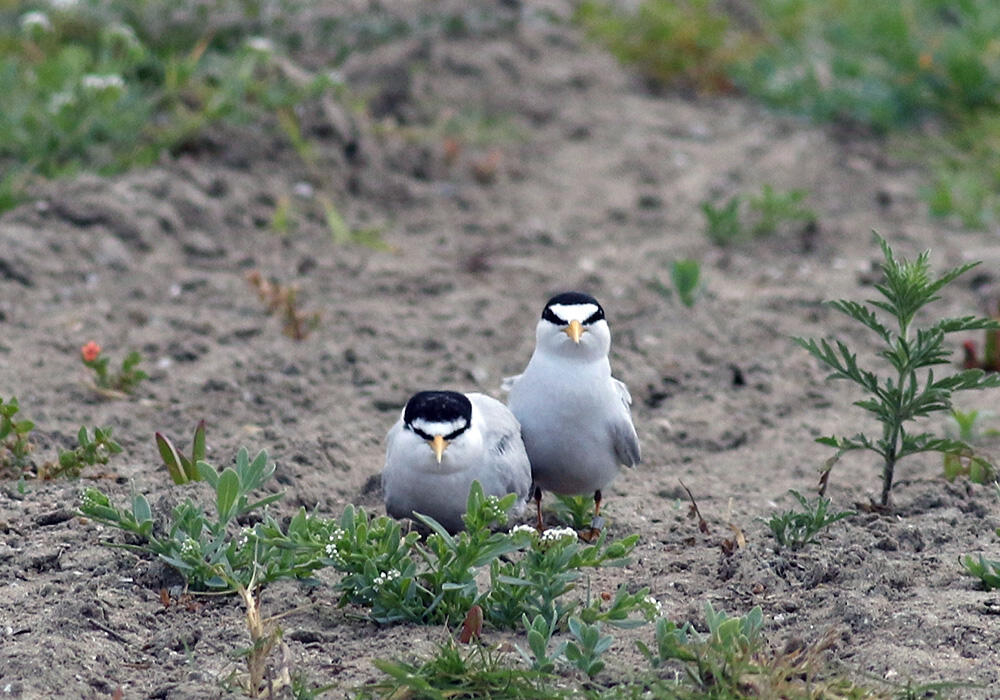
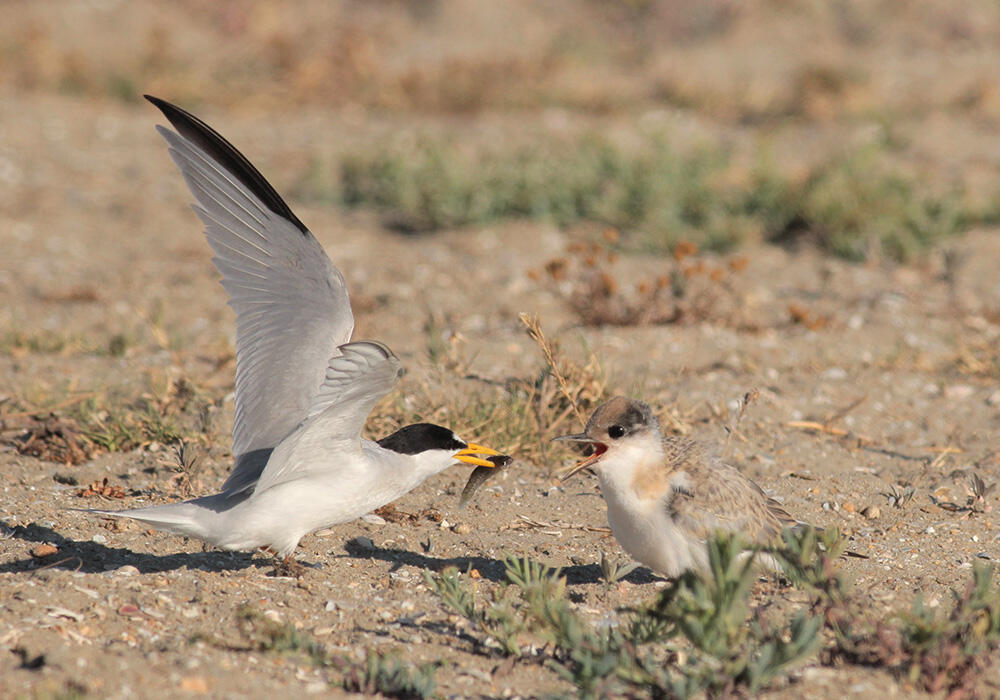
Diet
Least terns feed on small fishes such as topsmelt, anchovy, silversides, and small perches. They also prey on small crustaceans, insects, mollusks, and marine worms.
Reproduction
Starting around April, California least terns begin to arrive at their breeding sites. Males will engage in elaborate courtship rituals with the females. If she accepts him, the pair will be seasonally monogamous. Nests are then formed from simple scrapes in the sand or gravel and least terns typically lay two eggs. Incubation of the eggs and care for the chicks is done by both the male and female. Once hatched, it takes the chicks about four weeks to fledge, or grow their flight feathers, and the juveniles begin to accompany the adults on foraging trips.
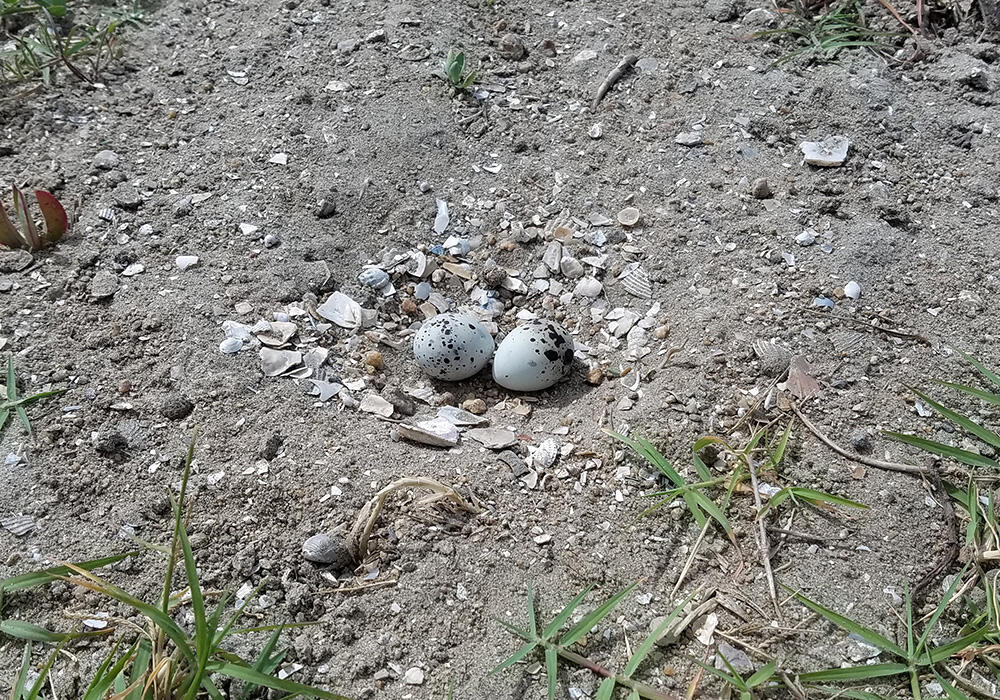
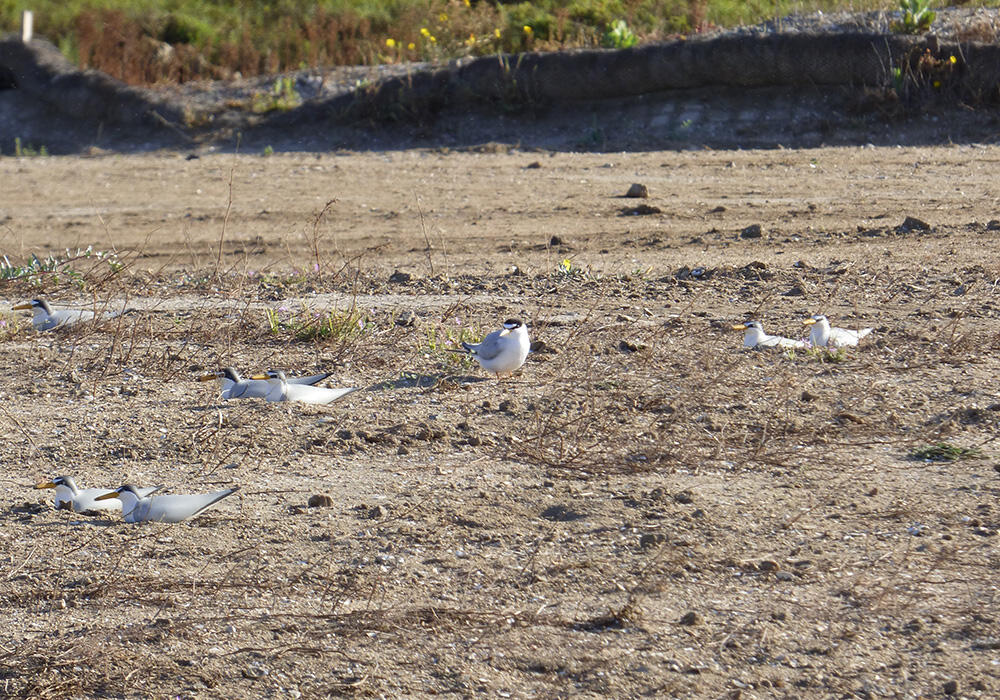
Migration and Distribution
These birds once nested in large colonies all throughout Southern and Central California; however, due to habitat loss and predation, their numbers have significantly diminished. Colonies can be found in San Francisco Bay and other areas along the California coast from San Luis Obispo to San Diego. Each colony typically consist of 25-50 mating pairs. After the breeding season concludes least terns fly south to Central America for the winter.
Risks
California Least Tern populations have improved since protection began in the 1970s; however, they continue to be threatened by habitat loss, predation, and human disturbance. As a ground-nesting bird, least tern nests are at risk of damage from people, dogs, and other animals that may not see and accidentally step on eggs or chicks. Nests are also susceptible to ground predators, including feral cats, coyotes, rats, and opossums.
Adult least terns, eggs, and chicks are also prey for raptors and hawks, and are easily frightened by drones which may cause adults to abandon their nests, eggs, and chicks. If you see one of these beautiful birds, observe it only from a distance. Every adult, egg, and chick are vital to protecting this species.
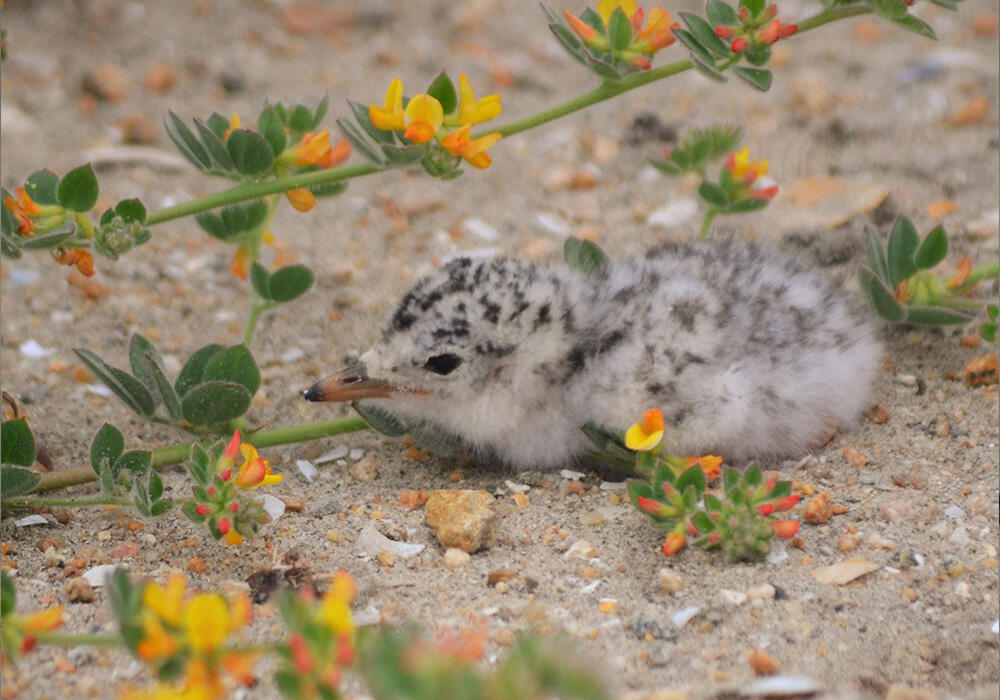

Species Recovery
Biologists carefully monitor least tern nesting sites to track how populations are doing and collect data on the number of adults, nests, eggs, chicks, and fledglings each year. Some chicks are given a leg band that has colors and/or numbers that identify where it hatched so it can be identified if it’s spotted in the future. Special permits are needed to work with endangered species, including least terns, and biologists are trained to be as careful as possible when working with these tiny but mighty birds.
Did You Know?
San Diego Bay’s least tern colonies account for roughly 60% of all breeding pairs! Want to learn more about how we’re environmental stewards and manage the natural resources along San Diego Bay? Check out our Environmental Conservation page.

